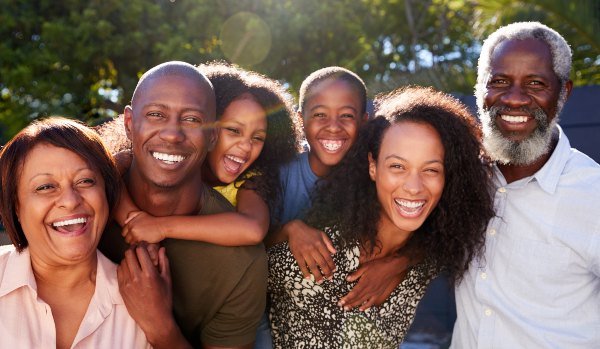Deck:A prevailing narrative that Black and Brown people are not united does damage to us all.We must embrace difficult conversations while seekingjustice for everyone.
Surveying revolutionary history in 1939, Trinidadian intellectual C.L.R. James observed that the only place that Negroes did not revolt is in the pages of capitalist historians. With respect to the history of the Black and Brown coalition, one might make a similar observation today: One of the only places that Black and Brown people are not united is in the records of mainstream history.
Too often, the struggle for racial justice is seen solely as a black-and-white issue. This framing perpetuates the assumption that the support of Black people and movements like Black Lives Matter (BLM) comes at the exclusion of Latinx or Latino lives and voices. This framing and line of thinking are not only dangerous, but theyre also incorrect.
The unity of Black and Brown voices has held as a stronghold against oppression for centuries in the fight for equality and justice. At a moment when that fight is more important, more pressing, and more unprecedented than at any time in recent history, its essential to understand the rich history of solidarity between Black and Brown people and what it means for the future.
Fighting False Narratives
Any assumption that Black and Brown people in America are against each other, rather than for each other, ispatently false. All one has to do is look at the demographic makeup of Black Lives Matter protestors to see thatLatinos are firmly in supportof ending violence against Black people.
Regardless, narratives persist of Black and Brown criminalization, gang and prison violence, and the perception that these communities are nothing more than competing constituencies. And the ongoing extremism and division in our country only serve to reinforce those mischaracterizations.
Some are quick to ask, Will the BLM protestors show up to protest child detention at the border and family separation? What about DACA? But theyre often just as quick to assume they know the answer. Too many choose to believe an assumption without taking a moment to figure out the real truth.
A History of Solidarity
Black-Brown solidarity in America has a rich, deep history; Brown and Black people have organized together in unity for decades. Sadly, there is a lack of scholarship, books, and general knowledge of that history. The work that does tell the stories of this solidarity is often limited and discipline-specific, examining issues of welfare, public health, or voting.
Because of this, its easy to lose the truth in a narrative thats been handed down through the ages and built on false assumptions. Further, its easy for important stories of unity to slip through the cracks.
When Martin Luther King Jr. was assassinated, he and two leaders in the Chicano rights movement, Rodolfo Corky Gonzales and Bayard Rustin, wereplanning a Poor Peoples March for Black and Brown Americans. In the 1940s, Charlotta Bass and Luisa Moreno organized Black and Brown people in Los Angeles to oppose racial violence, redlining, unionism, segregation, and more.
Just as the past reflects a deeply rooted, radical beauty of solidarity, so does the present and the future. After Hurrican Katrina hit New Orleans, the countrysuspended several immigration lawsto make cheaper labor available. Mexican and Central American workers were brought in to clean up and rebuild, but they were dismayed to look out their bus windows and see their Black brothers and sisters in desperate need of the same work theyd come to do in impacted communities. They knew what it felt like to be displaced, and they struggled to come to terms with taking jobs from people who lived in these communities even though they also needed the work.
Today, theBlack and Brown communities are tearing down statues togetherin pursuit of a reckoning of justice. As two of the groups most affected by mass incarceration, education inequity, and hunger, they understand that the workers, the displaced, and the oppressedneedsolidarity before we can achieve a better future.
Building a New Path Forward
These communities fuel the current movement to divest from the police and invest in communities, mental health resources, after-school activities, and professional training. Theyre the groups most suffering the consequences of centuries of racism, and they have come together to continue to fight injustice with a powerful and united front.
Too many Black and Brown people are forced to deal with violence and loss as a product of the structures in place to protect some and oppress others. Too many have to ask the question, What if they had everything they needed in life? when they see these losses happen time and time again.
We as a nation should be turning our eyes to our Black and Brown brothers and sisters as they stand in solidarity to elevate the issues that most need elevation. We must step forward to have the most difficult conversations while fighting forabsolutejustice and abolition for all.
Gaye Theresa Johnsonis an associate professor of Chicana and Chicano studies and African American studies at the University of California, Los Angeles. She teaches and writes on race and racism, cultural history, and freedom struggles.
***
If you believe in the work we are doing here at The Good Men Project and want a deeper connection with our community, please join us as a Premium Member today.
Premium Members get to view The Good Men Project with NO ADS. Need more info?
A complete list of benefits is here.
—
Photo credit: iStockPhoto.comread more
Forging a New View of Black-Brown Solidarity


